
NPDES Permit No. IL0022179
Notice No. FRB:15071001.daa
Public Notice Beginning Date: August 29, 2015
Public Notice Ending Date: September 28, 2015
National Pollutant Discharge Elimination System (NPDES)
Permit Program
PUBLIC NOTICE/FACT SHEET
of
Draft Reissued NPDES Permit to Discharge into Waters of the State
Public Notice/Fact Sheet Issued By:
Illinois EPA
Division of Water Pollution Control
Permit Section
1021 North Grand Avenue East
Post Office Box 19276
Springfield, Illinois 62794-9276
217/782-0610
Name and Address of Discharger:
Name and Address of Facility:
City of Momence
29 N. Dixie Highway
Momence, Illinois 60954
City of Momence - STP
600 West Water Street
Momence, Illinois 60954
(Kankakee County)
The Illinois Environmental Protection Agency (IEPA) has made a tentative determination to issue a NPDES Permit to discharge into the
waters of the state and has prepared a draft Permit and associated fact sheet for the above named discharger. The Public Notice period
will begin and end on the dates indicated in the heading of this Public Notice/Fact Sheet. All comments on the draft Permit and requests
for hearing must be received by the IEPA by U.S. Mail, carrier mail or hand delivered by the Public Notice Ending Date. Interested
persons are invited to submit written comments on the draft Permit to the IEPA at the above address. Commentors shall provide his or
her name and address and the nature of the issues proposed to be raised and the evidence proposed to be presented with regards to
those issues. Commentors may include a request for public hearing. Persons submitting comments and/or requests for public hearing
shall also send a copy of such comments or requests to the Permit applicant. The NPDES Permit and notice numbers must appear on
each comment page.
The application, engineer's review notes including load limit calculations, Public Notice/Fact Sheet, draft Permit, comments received, and
other documents are available for inspection and may be copied at the IEPA between 9:30 a.m. and 3:30 p.m. Monday through Friday
when scheduled by the interested person.
If written comments or requests indicate a significant degree of public interest in the draft Permit, the permitting authority may, at its
discretion, hold a public hearing. Public notice will be given 45 days before any public hearing. Response to comments will be provided
when the final Permit is issued. For further information, please call Francis Burba at 217/782-0610.
The following water quality and effluent standards and limitations were applied to the discharge:
Title 35: Environmental Protection, Subtitle C: Water Pollution, Chapter I: Pollution Control Board and the Clean Water Act were
applied in determining the applicable standards, limitations and conditions contained in the draft Permit.
The applicant is engaged in treating domestic and industrial wastewater for the City of Momence.
The length of the Permit is approximately 5 years.
The main discharge number is 001. The seven day once in ten year low flow (7Q10) of the receiving stream, Kankakee River is 426 cfs.
The design average flow (DAF) for the facility is 1.6 million gallons per day (MGD) and the design maximum flow (DMF) for the facility is
3.1 MGD. Treatment consists of grit removal, microscreening, activated sludge, chlorine disinfection/dechlorination, and sludge
treatment which consists of aerobic digestion, sludge drying beds, and land application of sludge.
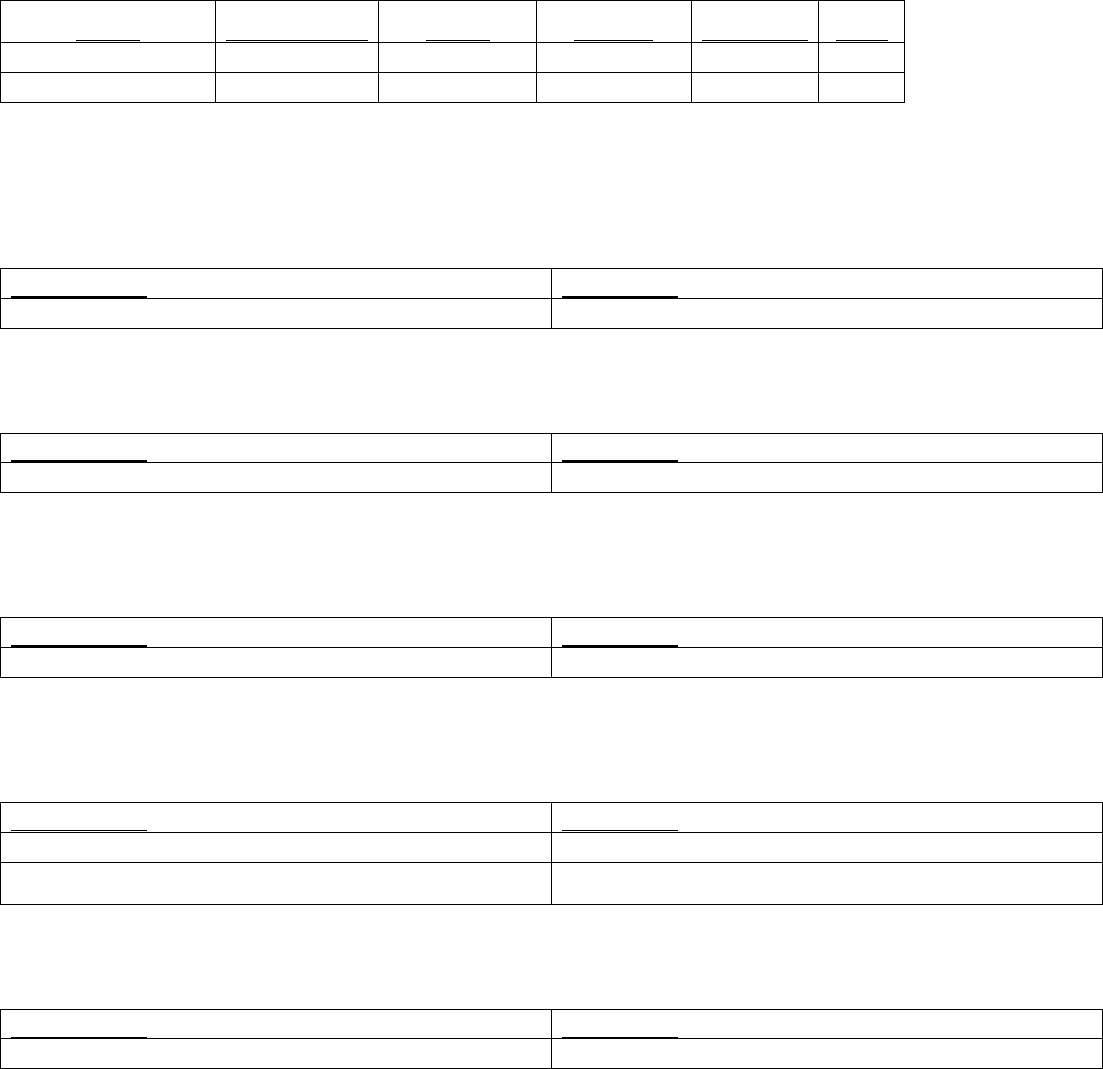
Public Notice/Fact Sheet -- Page 2 -- NPDES Permit No. IL0022179
This treatment works has an approved pretreatment program. There are 5 noncategorical SIUs and 0 CIUs.
This reissued Permit does not increase the facility’s DAF, DMF, concentration limits, and/or load limits.
Application is made for the existing discharge(s) which are located in Kankakee County, Illinois. The following information identifies the
discharge point, receiving stream and stream classifications:
Discharge
Number
Receiving Stream
Latitude
Longitude
Stream
Classification
Integrity
Rating
001 STP Outfall
Kankakee River
41° 09′ 30″ North
87° 40′ 30″ West
General Use
B
002 Excess Flow Outfall
Kankakee River
41° 09′ 30″ North
87° 40′ 30″ West
General Use
B
To assist you further in identifying the location of the discharge(s) please see the attached map.
The stream segment(s) (segment F-02) receiving the discharge from outfall(s) 001 and 002 are on the 303(d) list of impaired waters.
The following parameters have been identified as the pollutants causing impairment:
Potential Causes
Uses Impaired
PCBs
Fish consumption
The next downstream segment is F-12, Kankakee River, is on the 303(d) list of impaired waters.
The following parameters have been identified as the pollutants causing impairment:
Potential Causes
Uses Impaired
PCBs and mercury
Fish consumption
The next downstream segment is F-04, Kankakee River, is on the 303(d) list of impaired waters.
The following parameters have been identified as the pollutants causing impairment:
Potential Causes
Uses Impaired
PCBs and mercury
Fish consumption
The next downstream segment is F-16, Kankakee River, is on the 303(d) list of impaired waters.
The following parameters have been identified as the pollutants causing impairment:
Potential Causes
Uses Impaired
PCBs and mercury
Fish consumption
Fecal coliform
Primary contact
The next downstream segment is F-01, Kankakee River, is on the 303(d) list of impaired waters.
The following parameters have been identified as the pollutants causing impairment:
Potential Causes
Uses Impaired
PCBs and mercury
Fish consumption

Public Notice/Fact Sheet -- Page 3 -- NPDES Permit No. IL0022179
The discharge(s) from the facility is (are) proposed to be monitored and limited at all times as follows:
Discharge Number(s) and Name(s): 001 STP Outfall
Load limits computed based on a design average flow (DAF) of 1.6 MGD (design maximum flow (DMF) of 3.1 MGD).
The effluent of the above discharge(s) shall be monitored and limited at all times as follows:
LOAD LIMITS lbs/day
DAF (DMF)*
CONCENTRATION
LIMITS mg/L
Parameter
Monthly
Average
Weekly
Average
Daily
Maximum
Monthly
Average
Weekly
Average
Daily
Maximum
Regulation
CBOD
5
**
267(517)
534(1034)
20
40
35 IAC 304.120
40 CFR 133.102
Suspended Solids**
334(646)
600(1163)
25
45
35 IAC 304.120
40 CFR 133.102
pH
Shall be in the range of 6 to 9 Standard Units
35 IAC 304.125
Fecal Coliform
Daily Maximum shall not exceed 400 per 100 mL (May through October)
35 IAC 304.121
Chlorine Residual
0.05
35 IAC 302.208
Ammonia Nitrogen:
As (N) ***
April - October
163 (315)
12.2
35 IAC 355 and
35 IAC 302
November - March
200 (388)
15.0
Total Phosphorus (as P)
Monitor Only
35 IAC 309.146
Total Nitrogen
Monitor Only
35 IAC 309.146
Copper
0.68(1.3)
0.051
35 IAC 304.123
*Load Limits are calculated by using the formula: 8.34 x (Design Average and/or Maximum Flow in MGD) x (Applicable Concentration in
mg/L)
**BOD
5
and Suspended Solids (85% removal required): In accordance with 40 CFR 133, the 30-day average percent removal shall not be
less than 85 percent except as provided in Sections 133.103 and 133.105.
***A compliance schedule providing the facility additional time to comply with the lower ammonia nitrogen limits has been included in this
draft permit.
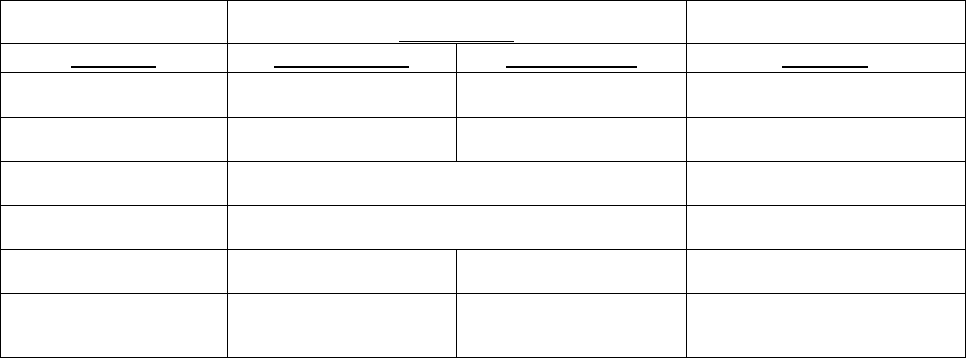
Public Notice/Fact Sheet -- Page 4 -- NPDES Permit No. IL0022179
This Permit contains an authorization to treat and discharge excess flow as follows:
Discharge Number(s) and Name(s): 002 Excess Flow Outfall (Flows greater than 2,153 gpm)
CONCENTRATION
LIMITS (mg/L)
Parameter
Monthly Average
Weekly Average
Regulation
BOD5*
30
45
40 CFR 133.102
Suspended Solids*
30
45
40 CFR 133.102
pH
Shall be in the range of 6 to 9 Standard Units
35 IAC 304.125
Fecal Coliform
Daily Maximum Shall Not Exceed 400 per 100 mL
35 IAC 304.121
Chlorine Residual
0.75
35 IAC 302.208
Ammonia Nitrogen (as N)
Monitor only
35 IAC 309.146
* The 30-day average percent removal shall not be less than 85 percent.
Public Notice/Fact Sheet -- Page 5 -- NPDES Permit No. IL0022179
This draft Permit also contains the following requirements as special conditions:
1. Reopening of this Permit to include different final effluent limitations.
2. Operation of the facility by or under the supervision of a certified operator.
3. Submission of the operational data in a specified form and at a required frequency at any time during the effective term of this
Permit.
4. More frequent monitoring requirement without Public Notice in the event of operational, maintenance or other problems resulting
in possible effluent deterioration.
5. Prohibition against causing or contributing to violations of water quality standards.
6. Recording the monitoring results on Discharge Monitoring Report Forms using one such form for each outfall each month and
submitting the forms to IEPA each month.
7. The provisions of 40 CFR Section 122.41(m) & (n) are incorporated herein by reference.
8. Effluent sampling point location.
9. At minimum of 85% removal of CBOD
5
and suspended solids.
10. Controlling the sources of infiltration and inflow into the sewer system.
11. Seasonal fecal coliform limits.
12. The Permittee is required to monitor for arsenic, barium, cadmium, hexavalent chromium, total chromium, copper, available
cyanide, total cyanide, fluoride, dissolved iron, total iron, lead, manganese, mercury, nickel, oil, phenols, selenium, silver and
zinc semi-annually three months from the effective date of this Permit.
13. Burden reduction.
14. Submission of annual fiscal data.
15. The Permittee is required to perform biomonitoring tests in the 18
th
, 15
th
, 12
th
and 9
th
months prior to the expiration date of the
permit, and to submit the results of such tests to the IEPA within one week of receiving the results from the laboratory.
16. Submission of semi annual reports indicating the quantities of sludge generated and disposed.
17 Reopening of this Permit to include revised effluent limitations based on a Total Maximum Daily Load (TMDL) or other water
quality study.
18. Capacity, Management, Operations, and Maintenance (CMOM) requirements.
19. The Permittee may conduct a study to demonstrate that a mixing zone and ZID is available in the receiving stream.
20. Compliance schedule for ammonia nitrogen limits.
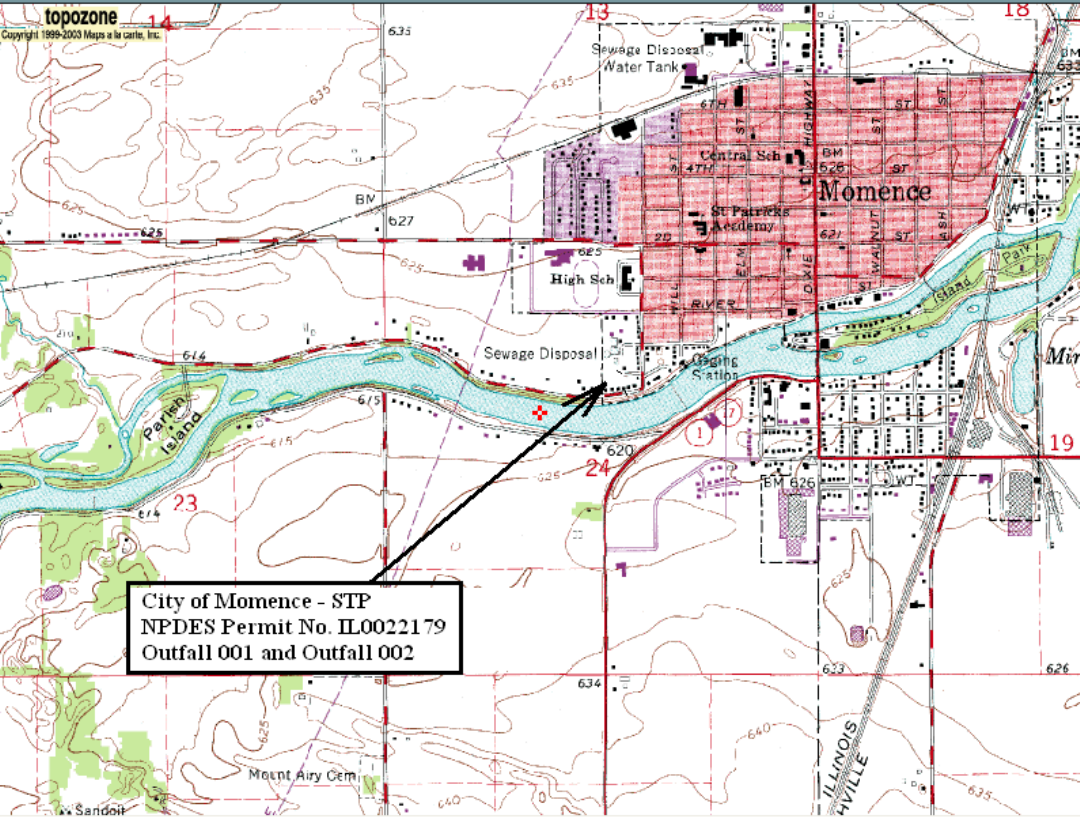
Public Notice/Fact Sheet -- Page 6 -- NPDES Permit No. IL0022179

NPDES Permit No. IL0022179
Illinois Environmental Protection Agency
Division of Water Pollution Control
1021 North Grand Avenue East
Post Office Box 19276
Springfield, Illinois 62794-9276
NATIONAL POLLUTANT DISCHARGE ELIMINATION SYSTEM
Reissued (NPDES) Permit
Expiration Date: Issue Date:
Effective Date:
Name and Address of Permittee:
Facility Name and Address:
City of Momence
29 N. Dixie Highway
Momence, Illinois 60954
City of Momence - STP
600 West Water Street
Momence, Illinois 60954
(Kankakee County)
Receiving Waters: Kankakee River
In compliance with the provisions of the Illinois Environmental Protection Act, Title 35 of the Ill. Adm. Code, Subtitle C, Chapter I, and the
Clean Water Act (CWA), the above-named Permittee is hereby authorized to discharge at the above location to the above-named
receiving stream in accordance with the Effluent Limitations, Monitoring, and Reporting requirements; Special Conditions and Attachment
H Standard Conditions attached herein.
Permittee is not authorized to discharge after the above expiration date. In order to receive authorization to discharge beyond the
expiration date, the Permittee shall submit the proper application as required by the Illinois Environmental Protection Agency (IEPA) not
later than 180 days prior to the expiration date.
Alan Keller, P.E.
Manager, Permit Section
Division of Water Pollution Control
SAK:FRB:15071001.daa
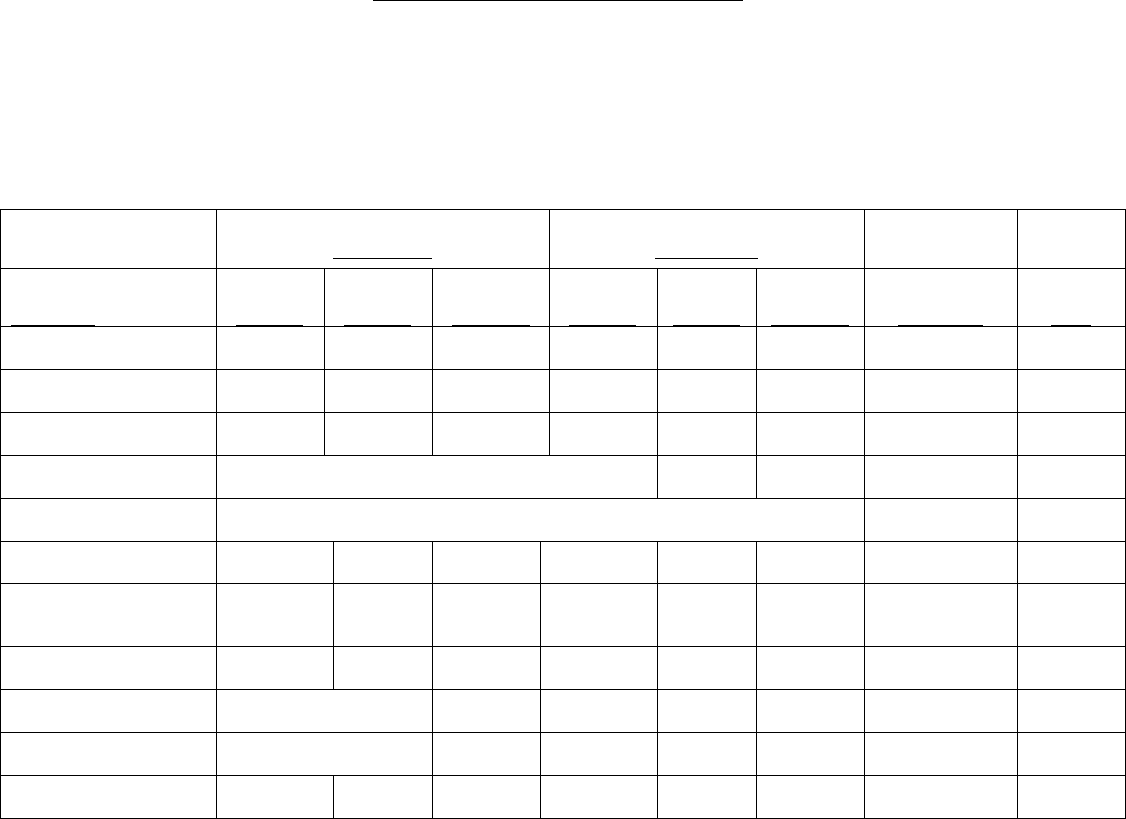
Page 2
NPDES Permit No. IL0022179
Effluent Limitations, Monitoring, and Reporting
FINAL
Discharge Number(s) and Name(s): 001 STP Outfall
Load limits computed based on a design average flow (DAF) of 1.6 MGD (design maximum flow (DMF) of 3.1 MGD).
From the effective date of this Permit until the expiration date, the effluent of the above discharge(s) shall be monitored and limited at all
times as follows:
LOAD LIMITS lbs/day
DAF (DMF)*
CONCENTRATION
LIMITS mg/L
Parameter
Monthly
Average
Weekly
Average
Daily
Maximum
Monthly
Average
Weekly
Average
Daily
Maximum
Sample
Frequency
Sample
Type
Flow (MGD)
Continuous
CBOD
5
**,****
267(517)
534(1034)
20
40
1 Day/Week
Composite
Suspended Solids****
334(646)
600(1163)
25
45
1 Day/Week
Composite
pH
Shall be in the range of 6 to 9 Standard Units
1 Day/Week
Grab
Fecal Coliform***
Daily Maximum shall not exceed 400 per 100 mL
(May through October)
3 Days/Week
Grab
Chlorine Residual***
0.05
3 Days/Week
Grab
Ammonia Nitrogen:
As (N)
1
April - October
163 (315)
12.2
3 Days/Week
Composite
November - March
200 (388)
15.0
3 Days/Week
Composite
Total Phosphorus (as P)
Monitor only
1 Day/Month
Composite
Total Nitrogen
Monitor only
1 Day/Month
Composite
Copper
0.68(1.3)
0.051
3 Days/Week
Composite
*Load limits based on design maximum flow shall apply only when flow exceeds design average flow.
**Carbonaceous BOD
5
(CBOD
5
) testing shall be in accordance with 40 CFR 136.
***See Special Condition 11.
****BOD
5
and Suspended Solids (85% removal required) For Discharge No. 001 and 002: In accordance with 40 CFR 133, the 30-day
average percent removal shall not be less than 85 percent except as provided in Sections 133.103 and 133.105. The percent removal
need not be reported to the IEPA on DMRs but influent and effluent data must be available, as required elsewhere in this Permit, for IEPA
inspection and review. For measuring compliance with this requirement, 5 mg/L shall be added to the effluent CBOD
5
concentration to
determine the effluent BOD
5
concentration.
Percent removal is a percentage expression of the removal efficiency across a treatment plant for a given pollutant parameter, as
determined from the 30-day average values of the raw wastewater influent concentrations to the facility and the 30-day average values of
the effluent pollutant concentrations for a given time period.
1
See Special Condition 20.
Flow shall be reported on the Discharge Monitoring Report (DMR) as monthly average and daily maximum.
Fecal Coliform shall be reported on the DMR as a daily maximum value.
pH shall be reported on the DMR as minimum and maximum value.
Chlorine Residual shall be reported on DMR as daily maximum value.
Total Phosphorus shall be reported on the DMR as a daily maximum value.
Total Nitrogen shall be reported on the DMR as a daily maximum value.
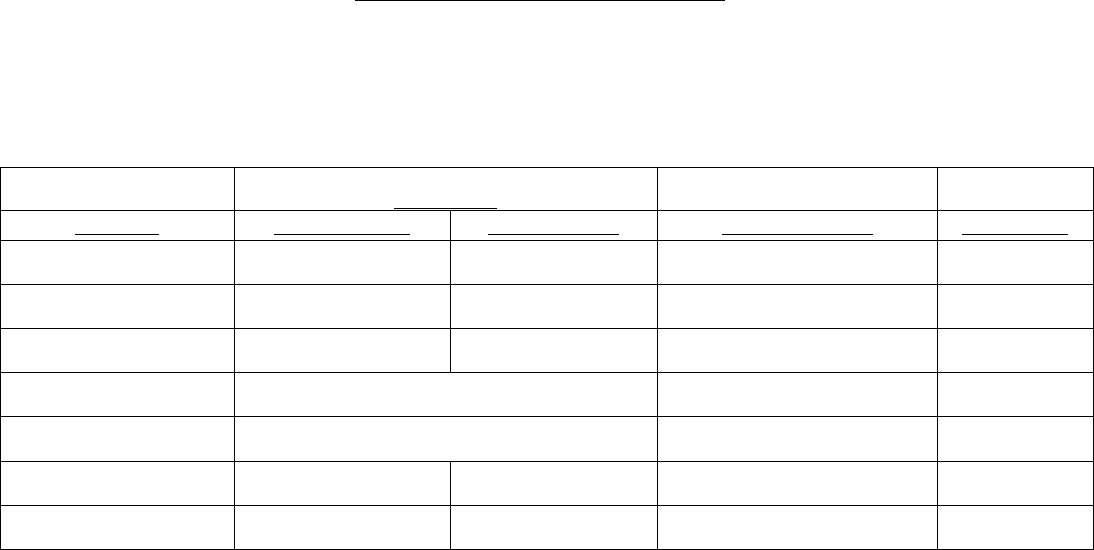
Page 3
NPDES Permit No. IL0022179
Effluent Limitations, Monitoring, and Reporting
FINAL
Discharge Number(s) and Name(s): 002 - Excess Flow Outfall (Flows greater than 2,153 gpm)*
From the effective date of this Permit until the expiration date, the effluent of the above discharge(s) shall be monitored and limited at all
times as follows:
CONCENTRATION
LIMITS mg/L
Parameter
Monthly Average
Weekly Average
Sample Frequency
Sample Type
Total Flow (MG)
Daily When Discharging
Continuous
BOD
5
**
30
45
Daily When Discharging
Grab
Suspended Solids**
30
45
Daily When Discharging
Grab
pH
Shall be in the range of 6 to 9 Standard Units
Daily When Discharging
Grab
Fecal Coliform
Daily Maximum Shall Not Exceed 400 per 100 mL
Daily When Discharging
Grab
Chlorine Residual
0.75
Daily When Discharging
Grab
Ammonia Nitrogen (as N)
Monitor only
Daily When Discharging
Grab
*An explanation shall be provided in the comment section of the DMR should these facilities be used when the main treatment facility is
not receiving Design Maximum Flow (DMF). The explanation shall identify the reasons the main facility is at a diminished treatment
capacity. Additionally, the Permittee shall comply with the provisions of Special Condition 7.
**The 30-day average percent removal shall not be less than 85 percent. See Special Condition 9.
Total flow in million gallons shall be reported on the Discharge Monitoring Report (DMR) in the quantity maximum column. The main
treatment facility flows at the time that 002 Excess Flow facilities are first utilized shall be reported in the comment section of the DMR in
gallons per minute (gpm).
Report the number of days of discharge in the comments section of the DMR.
Fecal Coliform shall be reported on the DMR as daily maximum.
Chlorine Residual shall be reported on the DMR as a monthly average concentration.
pH shall be reported on the DMR as a minimum and a maximum.
BOD
5
and Suspended Solids shall be reported on the DMR as a monthly average concentration.
Ammonia Nitrogen shall be reported on the DMR as a daily maximum value

Page 4
NPDES Permit No. IL0022179
Influent Monitoring, and Reporting
The influent to the plant shall be monitored as follows:
Parameter
Sample Frequency
Sample Type
Flow (MGD)
Continuous
BOD
5
1 Day/Week and Daily When 0utfall 002 is
Discharging
Composite
Suspended Solids
1 Day/Week and Daily When Outfall 002
is Discharging
Composite
Influent samples shall be taken at a point representative of the influent.
Flow (MGD) shall be reported on the Discharge Monitoring Report (DMR) as monthly average and daily maximum.
BOD
5
and Suspended Solids shall be reported on the DMR as a monthly average concentration.
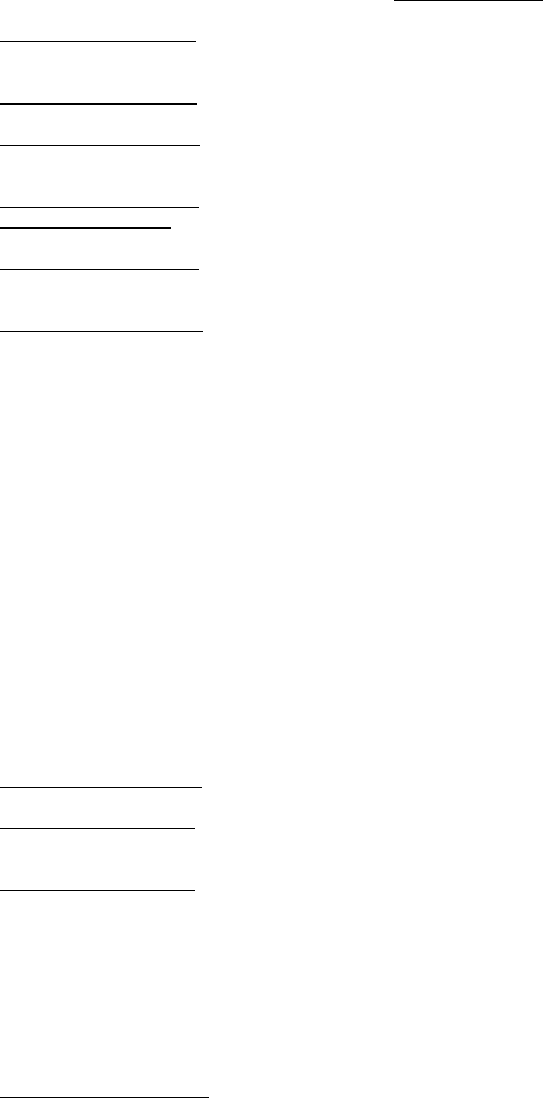
Page 5
NPDES Permit No. IL0022179
Special Conditions
SPECIAL CONDITION 1. This Permit may be modified to include different final effluent limitations or requirements which are consistent
with applicable laws and regulations. The IEPA will public notice the permit modification.
SPECIAL CONDITION 2. The use or operation of this facility shall be by or under the supervision of a Certified Class 1 operator.
SPECIAL CONDITION 3. The IEPA may request in writing submittal of operational information in a specified form and at a required
frequency at any time during the effective period of this Permit.
SPECIAL CONDITION 4. The IEPA may request more frequent monitoring by permit modification pursuant to 40 CFR § 122.63 and
Without Public Notice.
SPECIAL CONDITION 5. The effluent, alone or in combination with other sources, shall not cause a violation of any applicable water
quality standard outlined in 35 Ill. Adm. Code 302.
SPECIAL CONDITION 6. The Permittee shall record monitoring results on Discharge Monitoring Report (DMR) Forms using one such
form for each outfall each month.
In the event that an outfall does not discharge during a monthly reporting period, the DMR Form shall be submitted with no discharge
indicated.
The Permittee may choose to submit electronic DMRs (NetDMRs) instead of mailing paper DMRs to the IEPA. More information,
including registration information for the NetDMR program, can be obtained on the IEPA website,
http://www.epa.state.il.us/water/net-dmr/index.html.
The completed Discharge Monitoring Report forms shall be submitted to IEPA no later than the 25th day of the following month, unless
otherwise specified by the permitting authority.
Permittees not using NetDMRs shall mail Discharge Monitoring Reports with an original signature to the IEPA at the following address:
Illinois Environmental Protection Agency
Division of Water Pollution Control
Attention: Compliance Assurance Section, Mail Code # 19
1021 North Grand Avenue East
Post Office Box 19276
Springfield, Illinois 62794-9276
SPECIAL CONDITION 7. The provisions of 40 CFR Section 122.41(m) & (n) are incorporated herein by reference.
SPECIAL CONDITION 8. Samples taken in compliance with the effluent monitoring requirements shall be taken at a point representative
of the discharge, but prior to entry into the receiving stream.
SPECIAL CONDITION 9. BOD
5
and Suspended Solids (85% removal required) For Discharge No. 001 and 002: In accordance with 40
CFR 133, the 30-day average percent removal shall not be less than 85 percent except as provided in Sections 133.103 and 133.105.
The percent removal need not be reported to the IEPA on DMRs but influent and effluent data must be available, as required elsewhere in
this Permit, for IEPA inspection and review. For measuring compliance with this requirement, 5 mg/L shall be added to the effluent
CBOD
5
concentration to determine the effluent BOD
5
concentration.
Percent removal is a percentage expression of the removal efficiency across a treatment plant for a given pollutant parameter, as
determined from the 30-day average values of the raw wastewater influent concentrations to the facility and the 30-day average values of
the effluent pollutant concentrations for a given time period.
SPECIAL CONDITION 10. Consistent with permit modification procedures in 40 CFR 122.62 and 63, this Permit may be modified to
include requirements for the Permittee on a continuing basis to evaluate and detail its efforts to effectively control sources of infiltration
and inflow into the sewer system and to submit reports to the IEPA if necessary.
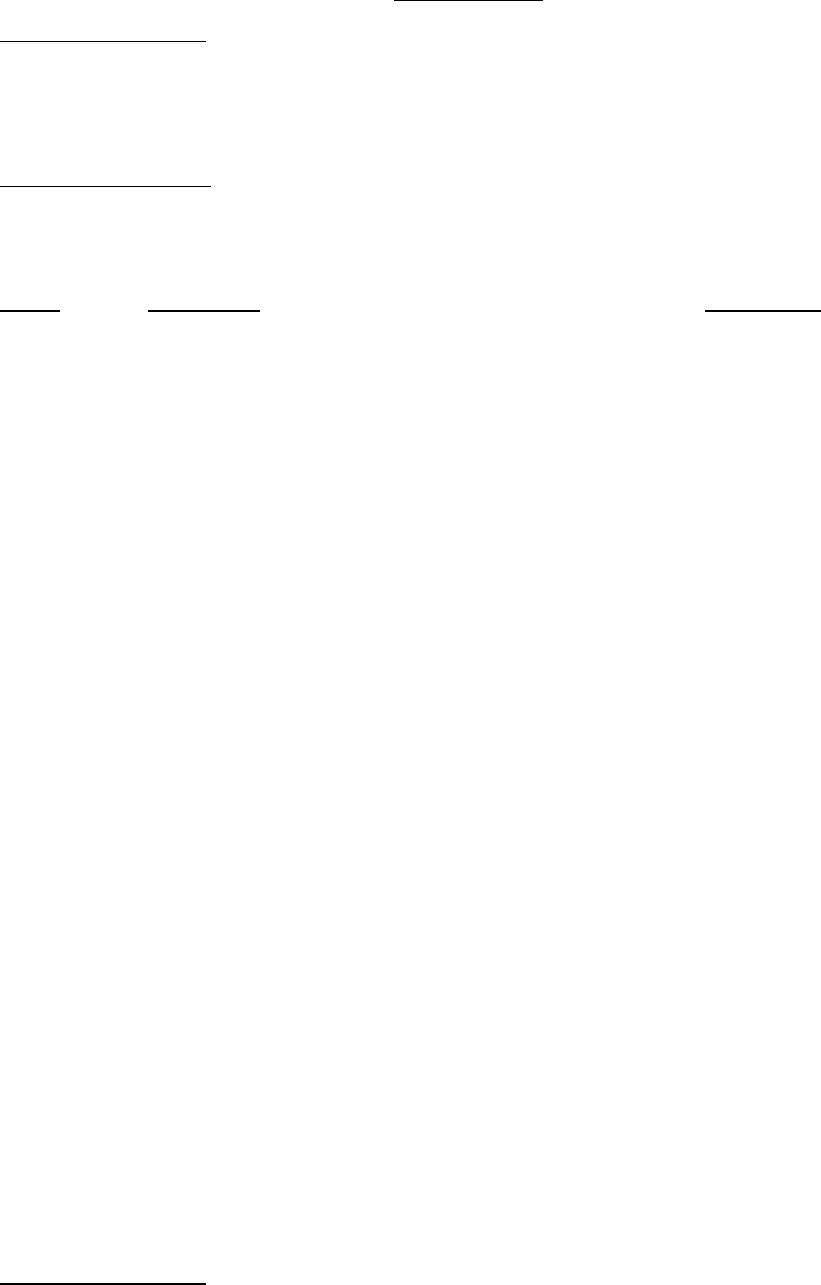
Page 6
NPDES Permit No. IL0022179
Special Conditions
SPECIAL CONDITION 11. Fecal Coliform limits for Discharge Number 001 are effective May thru October. Sampling of Fecal Coliform
is only required during this time period.
The total residual chlorine limit is applicable at all times. If the Permittee is chlorinating for any purpose during the months of November
through April, sampling is required on a daily grab basis. Sampling frequency for the months of May through October shall be as
indicated on effluent limitations, monitoring and reporting page of this Permit.
SPECIAL CONDITION 12. The Permittee shall monitor the effluent for the following parameters semi-annually, beginning three (3)
months from the effective date of this Permit. The sample shall be a 24-hour effluent composite except as otherwise specifically provided
below and the results shall be submitted on the Discharge Monthly Report Forms to IEPA unless otherwise specified by the IEPA. The
parameters to be sampled and the minimum reporting limits to be attained are as follows:
STORET Minimum
CODE PARAMETER reporting limit
01002 Arsenic 0.05 mg/L
01007 Barium 0.5 mg/L
01027 Cadmium 0.001 mg/L
01032 Chromium (hexavalent) (grab) 0.01 mg/L
01034 Chromium (total) 0.05 mg/L
01042 Copper 0.005 mg/L
00718 Cyanide (available*** or amenable to chlorination) (grab) 5.0 ug/L
00720 Cyanide (total) (grab not to exceed 24 hours) 5.0 ug/L
00951 Fluoride 0.1 mg/L
01045 Iron (total) 0.5 mg/L
01046 Iron (Dissolved) 0.5 mg/L
01051 Lead 0.05 mg/L
01055 Manganese 0.5 mg/L
71900 Mercury (grab)** 1.0 ng/L*
01067 Nickel 0.005 mg/L
00556 Oil (hexane soluble or equivalent) (Grab Sample only) 5.0 mg/L
32730 Phenols (grab) 0.005 mg/L
01147 Selenium 0.005 mg/L
01077 Silver (total) 0.003 mg/L
01092 Zinc 0.025 mg/L
Minimum Reporting Limits are defined as – (1) The minimum value below which data are documented as non-detects. (2) Three to ten
times the method detection limit. (3) The minimum value of the calibration range.
All sample containers, preservative, holding times, analyses, method detection limit determinations and quality assurance/quality control
requirements shall be in accordance with 40 CFR 136.
Unless otherwise indicated, concentrations refer to the total amount of the constituent present in all phases, whether solid, suspended or
dissolved, elemental or combined, including all oxidation states.
*1.0 ng/L = 1 part per trillion.
**Utilize USEPA Method 1631E and the digestion procedure described in Section 11.1.1.2 of 1631E.
***USEPA Method OIA-1677.
The Permittee shall provide a report briefly describing the permittee’s pretreatment activities and an updated listing of the Permittee’s
significant industrial users. The list should specify which categorical pretreatment standards, if any, are applicable to each industrial
User. Permittees who operate multiple plants may provide a single report. Such report shall be submitted within six (6) months of the
effective date of this Permit to the following addresses:
U.S. Environmental Protection Agency
Region 5
77 West Jackson Blvd.
Chicago, Illinois 60604
Attention: Water Enforcement and Compliance
Assurance Branch
Illinois Environmental Protection Agency
Division of Water Pollution Control
Attention: Compliance assurance Section, Mail Code #19
1021 North Grand Avenue East
Post Office Box 19276
Springfield, Illinois 62794-9276
SPECIAL CONDITION 13. The Permittee has undergone a Monitoring Reduction review and the influent and effluent sample frequency
has been reduced for parameters due to sustained compliance. The IEPA may require that the influent and effluent sampling frequency
for these parameters be increased without Public Notice. This provision does not limit EPA’s authority to require additional monitoring,
information or studies pursuant to Section 308 of the CWA.

Page 7
NPDES Permit No. IL0022179
Special Conditions
SPECIAL CONDITION 14. During January of each year the Permittee shall submit annual fiscal data regarding sewerage system
operations to the Illinois Environmental Protection Agency/Division of Water Pollution Control/Compliance Assurance Section. The
Permittee may use any fiscal year period provided the period ends within twelve (12) months of the submission date.
Submission shall be on forms provided by IEPA titled “Fiscal Report Form For NPDES Permittees”.
SPECIAL CONDITION 15. The Permittee shall conduct biomonitoring of the effluent from Discharge Number(s) 001.
Biomonitoring
A. Acute Toxicity - Standard definitive acute toxicity tests shall be run on at least two trophic levels of aquatic species (fish,
invertebrate) representative of the aquatic community of the receiving stream. Testing must be consistent with Methods for
Measuring the Acute Toxicity of Effluents and Receiving Waters to Freshwater and Marine Organisms (Fifth Ed.)
EPA/821-R-02-012. Unless substitute tests are pre-approved; the following tests are required:
1. Fish - 96 hour static LC
50
Bioassay using fathead minnows (Pimephales promelas).
2. Invertebrate 48-hour static LC
50
Bioassay using Ceriodaphnia.
B. Testing Frequency - The above tests shall be conducted using 24-hour composite samples unless otherwise authorized by the
IEPA. Samples must be collected in the 18th, 15th, 12th, and 9th month prior to the expiration date of this Permit.
C. Reporting - Results shall be reported according to EPA/821-R-02-012, Section 12, Report Preparation, and shall be submitted to
IEPA, Bureau of Water, Compliance Assurance Section within one week of receipt from the laboratory. Reports are due to the
IEPA no later than the 16th, 13th, 10th, and 7th month prior to the expiration date of this Permit.
D. Toxicity - Should a bioassay result in toxicity to >20% of organisms test in the 100% effluent treatment, the IEPA may require,
upon notification, six (6) additional rounds of monthly testing on the affected organism(s) to be initiated within 30 days of the toxic
bioassay. Results shall be submitted to IEPA within (1) week of becoming available to the Permittee. Should any of the
additional bioassays result in toxicity to >50% of organisms tested in the 100% effluent treatments, the Permittee shall
immediately notify IEPA in writing of the test results.
E. Toxicity Reduction Evaluation and Identification - Should the biomonitoring program identify toxicity and result in notification by
IEPA, the permittee shall develop a plan for toxicity reduction evaluation and identification. The plan shall be developed and
implemented in accordance with Toxicity Reduction Evaluation Guidance for Municipal Wastewater Treatment Plants,
EPA/833B-99/002, and shall include an evaluation to determine which chemicals have a potential for being discharged in the
plant wastewater, a monitoring program to determine their presence or absence and to identify other compounds which are not
being removed by treatment, and other measures as appropriate. The Permittee shall submit to the IEPA its plan within ninety
(90) days following notification by the IEPA. The Permittee shall implement the plan within ninety (90) days of notification of the
permittee above or other such date as is received by letter from IEPA.
The IEPA may modify this Permit during its term to incorporate additional requirements or limitations based on the results of the
biomonitoring. In addition, after review of the monitoring results and toxicity reduction evaluation, the IEPA may modify this
Permit to include numerical limitations for specific toxic pollutants and additional whole effluent toxicity monitoring to confirm the
results of the evaluation. Modifications under this condition shall follow public notice and opportunity for hearing.
SPECIAL CONDITION 16. For the duration of this Permit, the Permittee shall determine the quantity of sludge produced by the
treatment facility in dry tons or gallons with average percent total solids analysis. The Permittee shall maintain adequate records of the
quantities of sludge produced and have said records available for U.S. EPA and IEPA inspection. The Permittee shall submit to the
IEPA, at a minimum, a semi-annual summary report of the quantities of sludge generated and disposed of, in units of dry tons or gallons
(average total percent solids) by different disposal methods including but not limited to application on farmland, application on reclamation
land, landfilling, public distribution, dedicated land disposal, sod farms, storage lagoons or any other specified disposal method. Said
reports shall be submitted to the IEPA by January 31 and July 31 of each year reporting the preceding January thru June and July thru
December interval of sludge disposal operations.
Duty to Mitigate. The Permittee shall take all reasonable steps to minimize any sludge use or disposal in violation of this Permit.
Sludge monitoring must be conducted according to test procedures approved under 40 CFR 136 unless otherwise specified in 40 CFR
503, unless other test procedures have been specified in this Permit.
Planned Changes. The Permittee shall give notice to the IEPA on the semi-annual report of any changes in sludge use and disposal.
The Permittee shall retain records of all sludge monitoring, and reports required by the Sludge Permit as referenced in Standard Condition
25 for a period of at least five (5) years from the date of this Permit.

Page 8
NPDES Permit No. IL0022179
Special Conditions
If the Permittee monitors any pollutant more frequently than required by this permit or the Sludge Permit, the results of this monitoring shall
be included in the reporting of data submitted to the IEPA.
The Permittee shall comply with existing federal regulations governing sewage sludge use or disposal and shall comply with all existing
applicable regulations in any jurisdiction in which the sewage sludge is actually used or disposed.
The Permittee shall comply with standards for sewage sludge use or disposal established under section 405(d) of the CWA within the time
provided in the regulations that establish the standards for sewage sludge use or disposal even if the permit has not been modified to
incorporate the requirement.
The Permittee shall ensure that the applicable requirements in 40 CFR Part 503 are met when the sewage sludge is applied to the land,
placed on a surface disposal site, or fired in a sewage sludge incinerator.
Monitoring reports for sludge shall be reported on the form titled “Sludge Management Reports” to the following address:
Illinois Environmental Protection Agency
Bureau of Water
Compliance Assurance Section
Mail Code #19
1021 North Grand Avenue East
Post Office Box 19276
Springfield, Illinois 62794-9276
SPECIAL CONDITION 17. This Permit may be modified to include alternative or additional final effluent limitations pursuant to an
approved Total Maximum Daily Load (TMDL) Study or upon completion of an alternate Water Quality Study.
SPECIAL CONDITION 18. The Permittee shall work towards the goals of achieving no discharges from sanitary sewer overflows or
basement back-ups and ensuring that overflows or back-ups, when they do occur do not cause or contribute to violations of applicable
standards or cause impairment in any adjacent receiving water. Overflows from sanitary sewers are expressly prohibited by this permit
and by Ill. Adm. Code 306.304. In order to accomplish these goals of complying with this prohibition and mitigating the adverse impacts of
any such overflows if they do occur, the Permittee shall (A) identify and report to IEPA all SSOs that occur and (B) develop, implement and
submit to the IEPA a Capacity, Management, Operations, and Maintenance (CMOM) plan which includes an Asset Management strategy
within twenty four (24) months of the effective date of this Permit or review and revise any existing plan accordingly. The permittee shall
modify the Plan to incorporate any comments that it receives from IEPA and shall implement the modified plan as soon as possible. The
Permittee should work as appropriate, in consultation with affected authorities at the local, county, and/or state level to develop the plan
components involving third party notification of overflow events. The Permittee may be required to construct additional sewage transport
and/or treatment facilities in future permits or other enforceable documents should the implemented CMOM plan indicate that the
Permittee’s facilities are not capable of conveying and treating the flow for which they were designed.
The CMOM plan shall include the following elements:
A. Measures and Activities:
1. A complete map and system inventory for the collection system owned and operated by the Permittee;
2. Organizational structure; budgeting; training of personnel; legal authorities; schedules for maintenance, sewer system cleaning,
and preventative rehabilitation; checklists, and mechanisms to ensure that preventative maintenance is performed on equipment
owned and operated by the Permittee;
3. Documentation of unplanned maintenance;
4. An assessment of the capacity of the collection and treatment system owned and operated by the Permittee at critical junctions
and immediately upstream of locations where overflows and back-ups occur or are likely to occur; use flow monitoring as
necessary;
5. Identification and prioritization of structural deficiencies in the system owned and operated by the Permittee;
6. Operational control, including documented system control procedures, scheduled inspections and testing;
7. The Permittee shall develop and implement an Asset Management strategy to ensure the long-term sustainability of the
collection system. Asset management shall be used to assist the Permittee in making decisions on when it is most appropriate
to repair, replace or rehabilitate particular assets and develop long-term funding strategies; and
8. Asset management shall include but is not limited to the following elements:
a. Asset Inventory and State of the Asset;
b. Level of Service;
c. Critical Asset Identification;
d. Life Cycle Cost; and
e. Long-Term Funding Strategy.
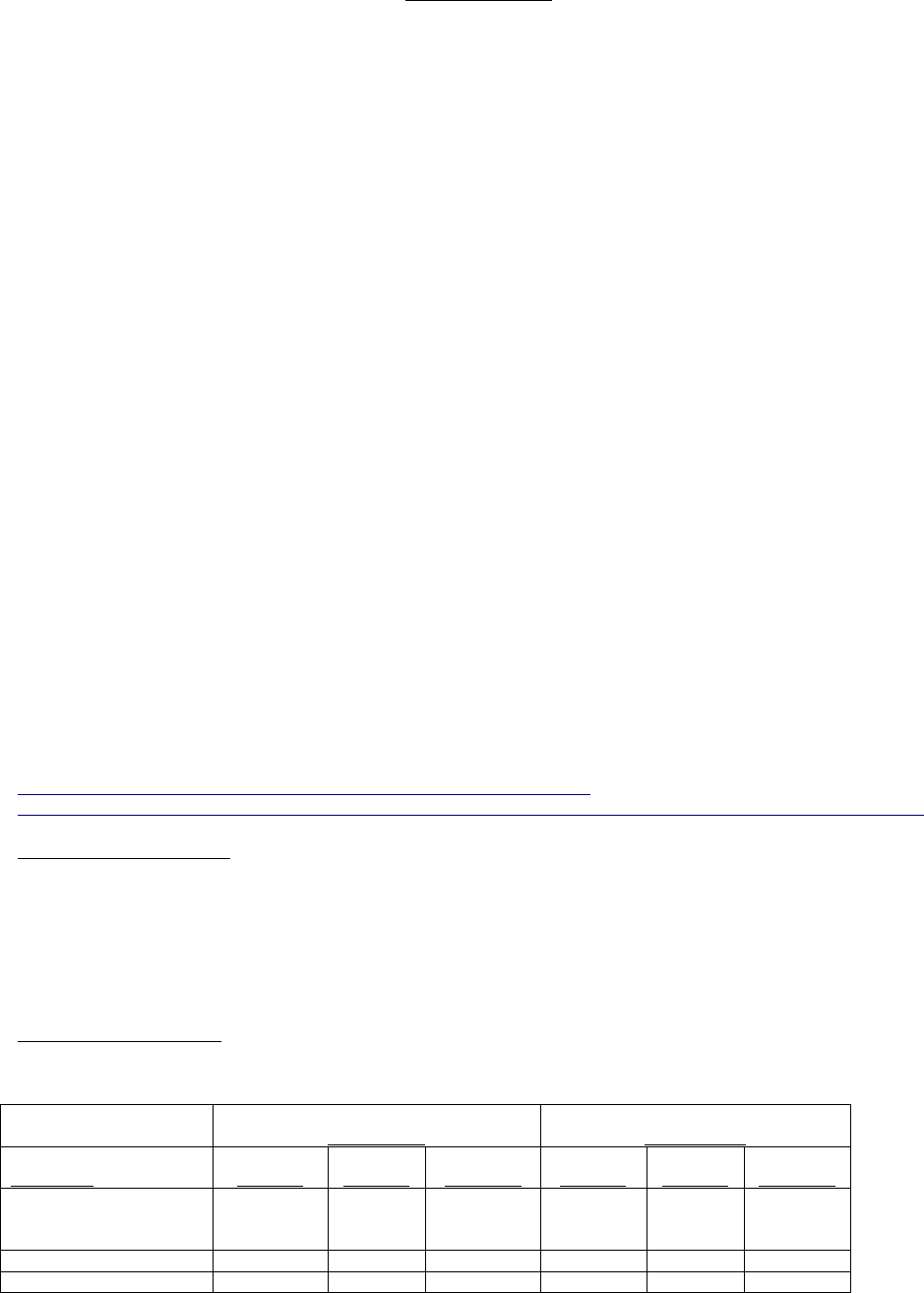
Page 9
NPDES Permit No. IL0022179
Special Conditions
B. Design and Performance Provisions:
1. Monitor the effectiveness of CMOM;
2. Upgrade the elements of the CMOM plan as necessary; and
3. Maintain a summary of CMOM activities.
C. Overflow Response Plan:
1. Know where overflows and back-ups within the facilities owned and operated by the Permittee occur;
2. Respond to each overflow or back-up to determine additional actions such as clean up; and
3. Locations where basement back-ups and/or sanitary sewer overflows occur shall be evaluated as soon as practicable for
excessive inflow /infiltration, obstructions or other causes of overflows or back-ups as set forth in the System Evaluation Plan.
D. System Evaluation Plan:
1. Summary of existing SSO and Excessive I/I areas in the system and sources of contribution;
2. Evaluate plans to reduce I/I and eliminate SSOs;
3. Special provisions for Pump Stations and force mains and other unique system components; and
4. Construction plans and schedules for correction.
E. Reporting and Monitoring Requirements:
1. Program for SSO detection and reporting; and
2. Program for tracking and reporting basement back-ups, including general public complaints.
F. Third Party Notice Plan:
1. Describes how, under various overflow scenarios, the public, as well as other entities, would be notified of overflows within the
Permittee’s system that may endanger public health, safety or welfare;
2. Identifies overflows within the Permittee’s system that would be reported, giving consideration to various types of events
including events with potential widespread impacts;
3. Identifies who shall receive the notification;
4. Identifies the specific information that would be reported including actions that will be taken to respond to the overflow;
5. Includes a description of the lines of communication; and
6. Includes the identities and contact information of responsible POTW officials and local, county, and/or state level officials.
For additional information concerning USEPA CMOM guidance and Asset Management please refer to the following web site addresses.
http://www.epa.gov/npdes/pubs/cmom_guide_for_collection_systems.pdf and
http://water.epa.gov/type/watersheds/wastewater/upload/guide_smallsystems_assetmanagement_bestpractices.pdf
SPECIAL CONDITION 19. Modeling or field studies may be used to demonstrate the availability of a mixing zone and zone of initial
dilution (ZID). The purpose of these optional studies is to define the dilution ratios present during 7Q10 low receiving stream flow
conditions. Any report submitted to the IEPA should show effluent concentrations at various distances downstream of the effluent outfall,
sufficient to demonstrate the area of the mixing zone and ZID, during the observed or modeled low flow condition. The mixing regulations
of 35 IAC 302.102 will then be used to determine if the conditions necessary for the Agency to grant a mixing zone and ZID are present. If
the permittee intends to pursue this option, a study plan outlining the methodologies proposed to be used must be submitted for IEPA
approval. The IEPA will review the study results and may reopen and modify this Permit to eliminate or include revised effluent limitations
based on the results of the collected data.
SPECIAL CONDITION 20. Project Description: Compliance with Ammonia Nitrogen Water Quality Standards
Thirty six (36) months from the effective date of this Permit the following ammonia nitrogen (as N) limits shall become effective:
LOAD LIMITS lbs/day
DAF (DMF)*
CONCENTRATION
LIMITS mg/L
Parameter
Monthly
Average
Weekly
Average
Daily
Maximum
Monthly
Average
Weekly
Average
Daily
Maximum
Ammonia Nitrogen:
As (N)
March-May/Sept.-Oct.
20(39)
51 (98)
76(147)
1.5
3.8
5.7
June-August
20(39)
51 (98)
92(178)
1.5
3.8
6.9
Nov.-Feb.
43(83)
3.2

Page 10
NPDES Permit No. IL0022179
Special Conditions
*Load limits based on design maximum flow shall apply only when flow exceeds the design average flow.
The Permittee may choose to demonstrate the availability of a mixing zone and zone of initial dilution (ZID) as described in Special
Condition 19 and submit the study results to the IEPA for review.
The Permittee shall complete the project described above in accordance with the following schedule:
(A) Interim Report on ammonia reductions to date and 6 months from the effective date of this Permit
what measures are necessary to comply with Final
Ammonia Nitrogen Limitations
(B) Preliminary Report on construction of ammonia facilities 12 months from the effective date of this Permit
(C) Plans and specifications 18 months from the effective date of this Permit
(D) Commence Construction 24 months from the effective date of this Permit
(E) Interim Report 30 months from the effective date of this Permit
(F) Permittee Achieves Compliance with Final 36 months from the effective date of this Permit
Ammonia Nitrogen Effluent Limitations
Should a mixing zone and zone of initial dilution be obtained by the Permittee, this Permit may be modified to remove this Special
Condition. Such modification shall include Public Notice and the Opportunity for public hearing
This Permit may be modified, with Public Notice, to include revised compliance dates set out in this Permit.
In addition, the IEPA may initiate a modification of the construction schedule set forth in this Permit at any time, to include other dates
which are necessary to carry out the provisions of the Illinois Environmental Protection Act, the Federal Clean Water Act or regulations
promulgated under those Acts or compliance dates which have been submitted in writing by the Permittee and approved by the IEPA.
Public Notice of such modifications and opportunity for public hearing shall be provided consistent with 40 CFR § 122.63.
REPORTING
The Permittee shall submit progress reports for items A, B, D, E, and F in the compliance schedule, indicating, a) the date the item was
completed, or b) that the item was not completed. All reports shall be submitted to IEPA at the following address:
Illinois Environmental Protection Agency
Attention: Compliance Assurance Section, Mail Code # 19
Division of Water Pollution Control
1021 North Grand Avenue East
Post Office box 19276
